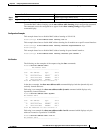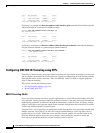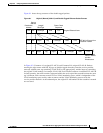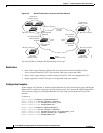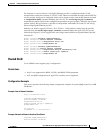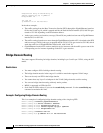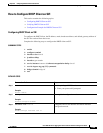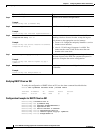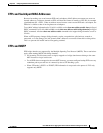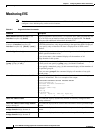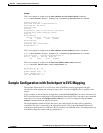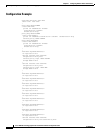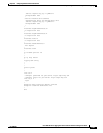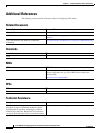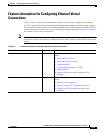
8-27
Cisco ASR 901 Series Aggregation Services Router Software Configuration Guide
OL-23826-09
Chapter 8 Configuring Ethernet Virtual Connections
Configuring Other Features on EFPs
EFPs and Switchport MAC Addresses
Because forwarding can occur between EFPs and switchports, MAC address movement can occur on
learned addresses. Addresses learned on EFPs will have the format of interface + EFP ID, for example
gigabitethernet 0/1 + EFP 1. When an address moves between a non-secured EFP and a switchport, the
behavior is similar to that of moving between switchports.
To see MAC address information for VLANs 1 to 4094, use the show mac address-table vlan privileged
EXEC command. For VLANs 4096 to 8000, use the show mac address-table bridge-domain privileged
EXEC command. All other show mac address-table commands also support bridge domains as well as
VLANs.
When an EFP property changes (bridge domain, rewrite, encapsulation, split-horizon, secured or
unsecured, or a state change), the old dynamic MAC addresses are removed from their existing tables.
This is to prevent old invalid entries from getting retained.
EFPs and MSTP
EFP bridge domains are supported by the Multiple Spanning Tree Protocol (MSTP). These restrictions
apply when running MSTP with bridge domains.
• All incoming VLANs (outer-most or single) mapped to a bridge domain must belong to the same
MST instance or loops could occur.
• For all EFPs that are mapped to the same MST instance, you must configure backup EFPs on every
redundant path to prevent loss of connectivity due to STP blocking a port.
• When STP mode is PVST+ or PVRST, EFP information is not passed to the protocol. EVC only
supports only MSTP.



